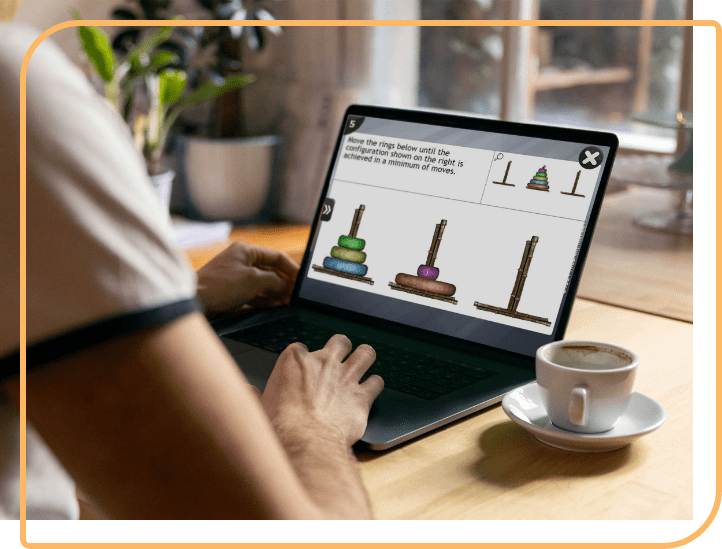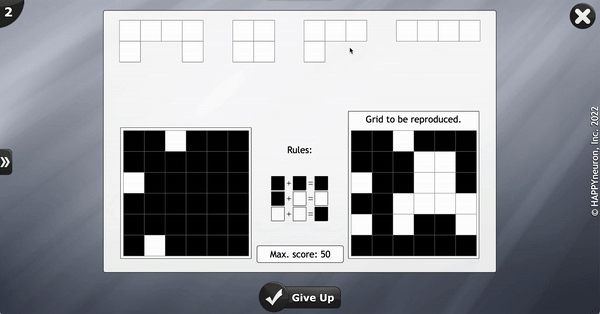
Cognitive exercises engage and train various brain regions necessary for everyday functioning. Different aspects of cognitive function may be improved with cognitive therapy. Some areas that may see improvement are executive functions, language, processing speed, and subdomains of memory, such as verbal, visual, auditory, and spatial.
HappyNeuron Pro is a tool to be used by clinicians to help build on or rebuild the foundation of different cognitive functions. Cognitive therapy may ultimately lead to life improvement for patients. Our exercises are designed to be engaging and relevant so that your patients can practice skills needed for everyday functioning and develop strategies to overcome obstacles.
Click any exercise learn more and play a sample workout!
Executive functioning refers to the cognitive processes responsible for planning, decision-making, regulating behavior, and inhibiting undesirable behaviors. Explore all of our exercises that have strong executive functioning components.
Memory is a cognitive ability that allows us to encode, store, and remember information. Explore all of our exercises that have strong memory components.
Visual-spatial skills allow us to orient ourselves in space, perceive objects in our environment, construct a scene, and mentally manipulate objects when they are not present. Explore all of our exercises that have a visual-spatial component.
Attention skills are essential for individuals to be able to receive stimuli. Even though all of our exercises require an individual to pay attention, the exercises listed below require focused attention.
Processing speed measures how quickly information is processed and then reacted to achieve a desired behavior. Explore all of our exercises that have either rapid stimuli or require a quick reaction time.
Auditory processing relies on sound coming in through our ears, bouncing off of our eardrums, and relaying a signal to our brains. These signals come in the form of pitch and amplitude. Explore all of our exercises that have an auditory component.
Language ability relies on cognitive skills such as verbal memory, verbal reasoning, and visual and auditory processing. Explore all of our exercises that have strong verbal components to them.

Executive Function | Reasoning
Place colored squares on a grid to copy a figure, knowing that the superimposition of figures follows specific rules.
Cognitive Function Exercised
This problem-solving exercise requires you to define a strategy to re-make the figure, knowing that intermediate superimpositions can be quite disconcerting. The main difficulty stands in picking out the relevant pieces of information.
Our digital tool can be used anywhere.
Exercises, reporting, and more are accessible on any device.
 Starting in Fall 2023, we will offer assessments for general cognitive function and aphasia.
Starting in Fall 2023, we will offer assessments for general cognitive function and aphasia.
Learn More →
Pricing + Offers


© 2023 HappyNeuron is a Product of Humans Matter